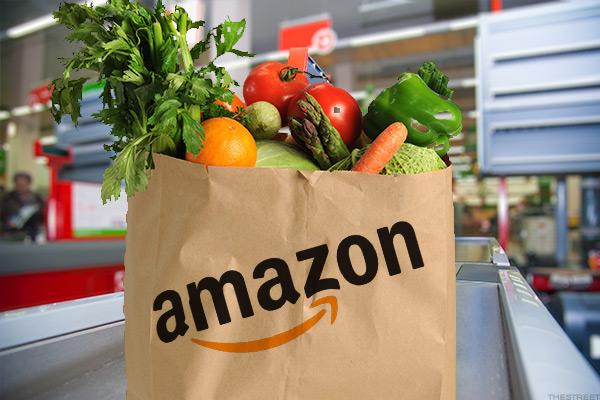Food gets more and more expensive every year. It can be even more expensive if you are trying to eat all – natural, organic and /or GMO-free! The USDA estimates that a family of 4 spends roughly $897.20 monthly on a moderate grocery budget and those with more liberal budgets spend around $1,111.60 monthly. USDA.gov
As you can see groceries take up a big chuck of most household incomes but we all have to eat something! Many people say the reason they can’t eat healthy is because their budgets just won’t support it. That is understandable but being healthy and putting good foods into our bodies is important. The long term benefits are better health and fewer health related illnesses and expenses.
If you’re reading this and saying I just can’t afford to eat healthy, there is no need to despair, there is light at the end of the tunnel and it is possible to eat healthier and save money at the same time.
- Buy Less Than Perfect Produce
If you have been to any furniture store you know there is a hidden room or floor that houses all of the damaged furniture. But did you know that many grocery stores have areas like this too! Okay it isn’t in a hidden away room or anything like that but most stores do sell and discount damaged produce.
This produce is still perfectly fine to eat, but it may be bruised or oddly shaped. Remember it’s not what’s on the outside that matters it’s what’s on the inside.
- Take Inventory and Use a Shopping List
First things first never go to the grocery store without a shopping list and a plan. The moment you walk into a grocery store without a plan and a list you are in trouble because things will begin to fall off the shelf into your cart.
Then when you get home you will have 50 things you didn’t need and the one thing you needed you forgot. Take stock of what you already have at home. Once you know what you have it is time to make a list of what you need. A shopping list takes on superpowers shielding you from impulse buying and forgetfulness.
- Plan Meals Ahead of Time
Remember, meal planning is not meal prepping.
So don’t run away because you have to spend your entire Sunday cooking all the meals for the week. Meal planning is simply putting together a menu for the week. You don’t have to cook it all yet!
Meal planning is useful when it comes time to do your inventory and then write out your shopping list. Use your meal plan to guide your trip and only get what you need to prepare the meals for the week.
- Cut back on alcohol
Let’s be honest here, alcohol is not essential and on average a US family spends around $50 a week on alcohol. That is a lot of money that can be saved right away. Even if you do not cut it out completely, reducing alcohol intake by 10% or participating in events like dry January would help.
- Comparison Shop
If you were buying a car or tv you would compare prices from different stores, right? Well the same should apply to your food purchases.
A trip to the grocery store may not cost as much as a TV does upfront but remember the average family of 4 spends enough in groceries to buy a new flat screen every month.
Try to learn which stores in your area have the best prices on which goods, or which have the best sales on things your family eats. The easiest way to do this is to go to their websites and get their weekly ad. That way you can compare and map out where to get what for the best price.
- Buy Less Prepackaged Foods
Does your kid like lunchables? If yours does, it can be cheaper to prepare your own lunchables. Doing so, not only could you choose the ingredients but you will also be saving money.
Have you ever compared the prices of pre-made kid lunch packs to the actual ingredients needed to make those packs?
- Put It In The Freezer
If you have ever said ” I would buy organic but it would just go bad before I had a chance to eat it” then it is time to put your freezer to work.
There are so many things you can freeze and then use as you need them. So if there is a great sale on produce stock up and freeze it for later.
- Buy in Bulk
A simple way to buy organic foods on a tight budget is to buy in bulk. You can get great deals on organic meat and produce at wholesales stores like Costco, Sams or even online retailers such as Azure and Thrive Market.
Don’t go getting crazy now. Make sure that you are buying foods that you already know your family likes, otherwise you will waste money, food and space. Remember if there is a good deal of things your family does like you can always freeze it for later.
- Prioritize Organic Purchases to Eat Healthier
We would all love to be eating totally organic but that might not be feasible for your budget. The best way to get around this is to prioritize your organic purchases.
You should definitely get organic meat, dairy, and other animal byproducts as the non organic types have the highest chance of being full of pesticides, chemicals and hormones.
- Cut Down on Meat
No I am not trying to turn you into a vegan or a vegetarian. But if you are serious about trying to eat healthier then one meatless meal a week is a great option not to mention a major money saver. Meat can be pricey so if you cut down to once a week Meatless Monday it can add a little extra meat to your wallet…
- Make It From Scratch and/or Grow It At Home
Here is the thing: healthy pre-made meals and sides may be insanely convenient but they can also be just as insanely high. If strolling into your local Whole Foods and picking up a dish from their prepared foods section isn’t on the budget it is time to make it from scratch, which is even healthier than Whole Foods.
While on the subject of making things from scratch why not try your hand at growing some of your own foods. If you are tight on space you can grow many foods right in your house such as romaine lettuce: it is really simple to just stick it in water and watch it grow.
Here are some other foods that you can grow indoors:
- Lettuce
- Kale
- Cabbage
- Arugula
- Tomatoes
- Peppers
- Beans
- Culinary Herbs
- Edible Flowers
- Sprouts
- Eat Seasonally
While you can buy the majority of produce year-round, every fruit and vegetable actually has a time when it is truly in season. If you want to eat healthier and increase the amount of produce you eat try to stick to what is in season.
Foods in season will be the cheapest because they won’t have to be shipped in from different parts of the world. The only exception to this rule are apples, they are ubiquitous all year round and you are safe to buy and consume them any time of the year. In fact apples are so popular, cheap and healthy alternatives that they should always be part of your diet. In fact, apples are so ubiquitous that people tattoo them on their skin and name products about them.
- Check Out Your Farmer’s Market
If you’re lucky, you may have a farmer’s market in your area, or maybe in a bigger city near you. Farmer’s markets can be a great place to get locally grown fruits and vegetables for lower prices. Not to mention you are supporting local farming families.
- Use It All Up
Get used to eating a week with whatever you have in your house. That means no grocery shopping at all. Grab whatever you have in the fridge and freezer and get creative. Casseroles are the way to go to mix and hide foods into dishes while using things up.
- Buy the Store Brand
Finally whenever possible opt for the store brand. The store brand is always cheaper. I hope that you found this post useful and are well on your way to saving money while you eat healthier. Your family, your body and your wallet will thank you for it.






